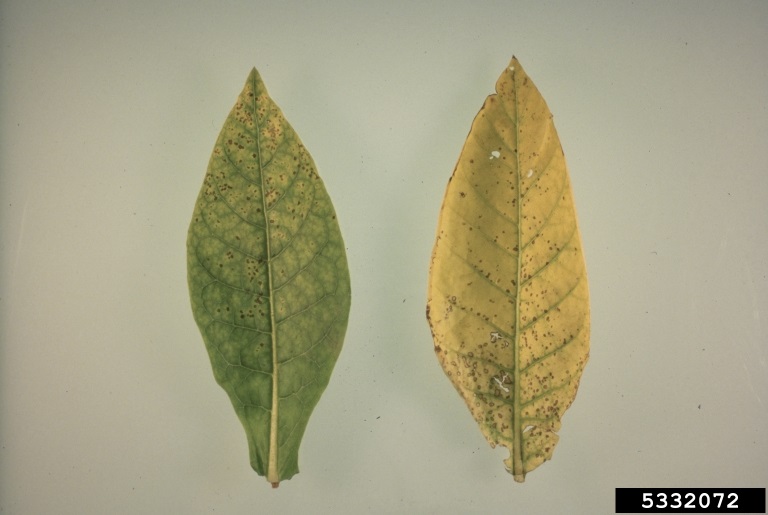Manganese in plants and soil
Manganese is an essential plant micronutrient . It is absorbed by plants as Mn2+. Manganese is an immobile nutrient and, therefore, deficiency symptoms show up on younger leaves first.
A manganese level of 20 to 40 ppm (mg kg–) in plant tissue is sufficient for most plants. Toxicity might occur when manganese tissue levels are greater than 400 ppm.
ROLES OF MANGANESE IN PLANTS
Manganese plays a vital role in various processes:
Agronomy Toolkit – Free Download
Are you looking for helpful resources to improve your agronomic practices? This FREE download includes essential information such as unit conversions, soil and water analysis interpretation, and more. Simply click the button below to access the toolkit and start improving your agronomic knowledge today. Don’t miss out on this valuable resource!
MANGANESE DEFICIENCY
Manganese deficiency results in reduced crop yields and quality, mainly due to impairment of the photosynthesis process and synthesis of starch .
Deficiency symptoms begin as interveinal chlorosis of younger leaves and/or necrotic spots.
Deficiency occurs mainly in calcareous soils, soils with high pH, soils with high organic matter content and in poorly-aerated soils.
Excess of iron might also cause manganese deficiency, as iron competes with manganese for uptake.
In calcareous soils, a foliar application is recommended for correcting manganese deficiency.
Manganese deficiency in citrus
MANGANESE TOXICITY
When in excess, manganese damages the photosynthesis process and other processes, such as enzyme activity.
The threshold of manganese toxicity is highly dependent on the plant species.
Toxicity symptoms include brown spots on mature leaves and chlorotic specks on young leaves. Toxicity symptoms appear on older leaves first. Symptoms spread from leaf borders inwards.
Manganese toxicity is major limiting factor in acidic soils.
Soil conditions that favor accumulation of toxic levels of manganese:
Soil pH lower than 5.5
Low calcium levels in the soil
Lack of oxygen as a result of excessive irrigation, poor soil drainage, soil compaction, high precipitation.
Manganese toxicity in tobacco. Source:
Mary Ann Hansen, Virginia Polytechnic Institute and State University, Bugwood.org
How to treat manganese toxicity
Manganese toxicity can be treated in various ways:
- Application of magnesium
- Application of organic matter
- Application of lime for soils with low pH
- Prevent fluctuations in soil moisture level
MANGANESE IN SOIL
The reactions of manganese in soil are complex. The two major factors that affect manganese availability are pH and redox conditions. Other factors include soil organic matter, microbial activity, soil temperature and seasonal variations affect its availability to plants.
The most soluble form of manganese is Mn2+. Other oxidation states form low-solubility compounds, such as MnO2, Mn2O3, Mn3O4.
Soil pH – Solubility of manganese increases at lower soil pH. Manganese is available in soil pH lower than 7.0. At soil pH lower than 5.5, manganese toxicity might occur.
At a higher soil pH, low-solubility manganese compounds form and manganese solubility is reduced. Furthermore, at high soil pH, a higher rate of manganese adsorbs to soil particles and, as a result, its availability to plants decreases.
Soil moisture – Dry soil conditions also decrease manganese availability. On the other hand, manganese availability increases in waterlogged soils, due to the reduction of manganese oxides. Rapid change in manganese may occur, depending on the soil moisture status.
Microorganisms – Redox reactions carried out by microorganisms greatly affect manganese availability to plants.
Soil temperature – Higher soil temperature increases manganese availability, as manganese is reduced to the Mn2+ soluble form.
Soil organic matter – Organic matter forms complexes with manganese and reduces its availability. In fact, manganese deficiency is more common in soils with high organic matter content than in alkaline soils.
It has been shown that plant roots also affect manganese availability by reducing and releasing Mn2+ from insoluble manganese compounds. However, the mechanisms of such reactions are not yet fully understood.
COMMON MANGANESE FERTILIZERS AND THEIR COMPOSITION
Manganese sulfate – 26-28% Mn.
Manganese oxide – 41-68% Mn. For acidic soils only, as it has a low solubility.
Manganese EDTA – 12-13%.
Manganese chloride – MnCl2










